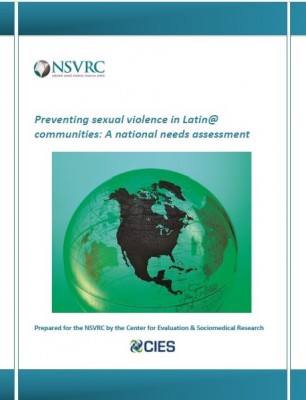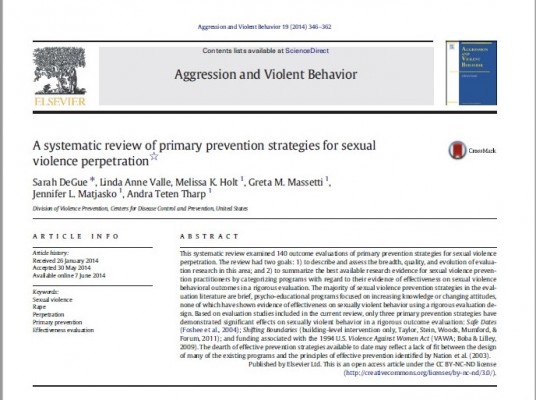Resources Library: Evaluation
Start a Search:
Preventing Sexual Violence in Latin@ Communities: A National Needs Assessment

A significant proportion of people living in the United States are of Latin@ origin – about 16%, or 50.5 million, as of 2010 (U.S. Census Bureau, 2011). But the few existing studies on sexual violence against Latin@s have shown a lack of culturally relevant services for Latin@ survivors to be a substantial need. One in six Latina women report sexual victimization in their lifetime (Cuevas & Sabina, 2010). Latin@s encounter more barriers to seeking services than non-Latin@s, especially if they are immigrants (Ingram, 2007). Latin@s are also less likely to report rape victimization (Tjaden & Thoennes, 2000).
Therefore, the purpose of this needs assessment was to guage the following:
1. Who are the key groups/organizations engaging in and/or supporting sexual violence prevention and intervention in Latin@ and/or Spanish-speaking communities?
2. What are the resource needs of advocates, counselors, and other professionals in the field engaging in sexual violence prevention and intervention in Latin@ and/or Spanish-speaking communities?
3. What is the cultural competency and Spanish-language capacity of programs and organizations to serve Latin@ and/or Spanish-speaking communities?
4. What is the most effective role of the NSVRC in supporting advocates working with Latin@ and/or Spanish-speaking communities?
Resources Addressing the Unique Needs of Black and Latin@ LGBQ/T Survivors of Partner Abuse

TOD@S (Transforming Ourselves through Dialogue, Organizing, and Services) is an interagency collaboration between The Hispanic Black Gay Coalition, The Violence Recovery Program at Fenway Health, The Network / La Red, and Renewal House (a program of the Unitarian Universalist Urban Ministry) in Boston, Massachusetts. Their mission is to improve and increase access to intervention and prevention services for Black and Latin@ lesbian, gay, bisexual, transgender, and queer (LGBTQ) people affected by partner abuse.
They have created a Community Needs Assessment and Action Plan as well as a training for community service providers.
Systematic Review of Primary Prevention Strategies for Sexual Violence Perpetration

This systematic review from 2014 had two goals related to looking at primary prevention strategies for sexual violence: 1) to describe and assess the breadth, quality, and evolution of evaluation
research in this area; and 2) to summarize the best available research evidence for sexual violence prevention practitioners by categorizing programs with regard to their evidence of effectiveness on sexual violence behavioral outcomes in a rigorous evaluation.
The study found 3 strategies that had significant effects on sexually violent behavior in a rigorous outcome evaluation: Safe Dates (Foshee et al., 2004); Shifting Boundaries (building-level intervention only, Taylor, Stein, Woods, Mumford, & Forum, 2011); and funding associated with the 1994 U.S. Violence Against Women Act (VAWA; Boba & Lilley, 2009).

